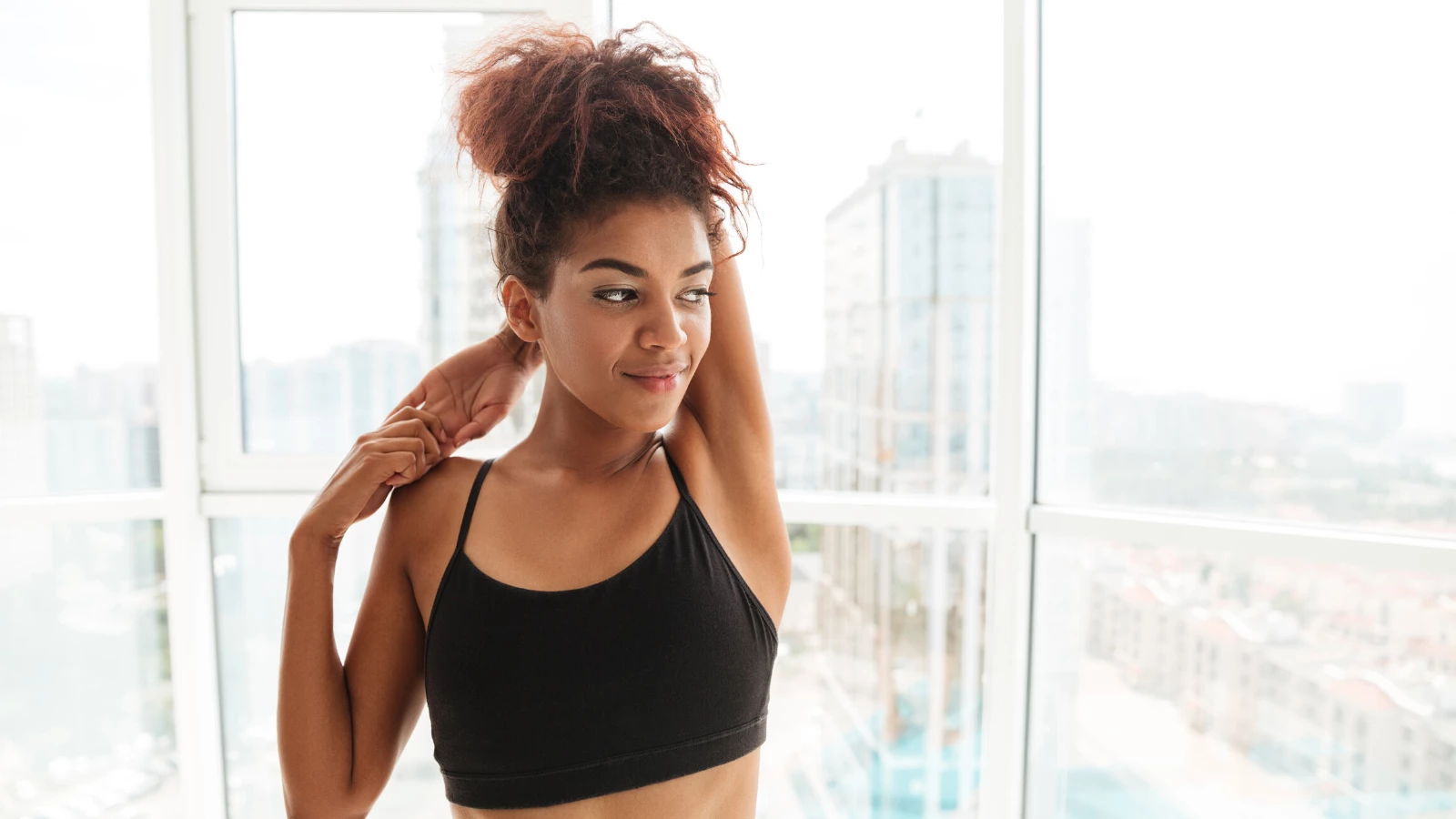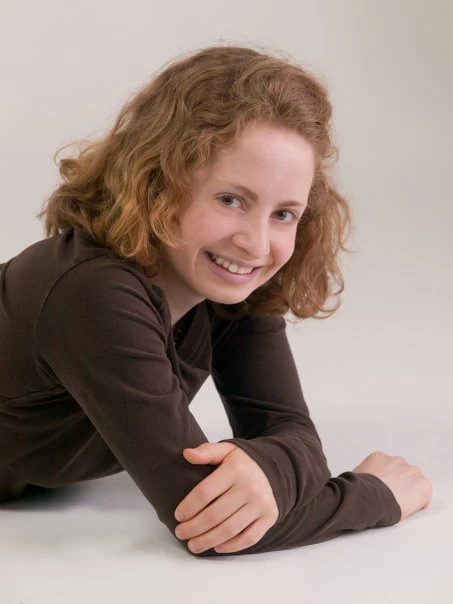Mobilize Tight Shoulders: 4 Yoga Shoulder Stretches Using a Wall

Crouching over electronic devices, driving for long commutes through stressful environments, not regularly moving our bodies in healthy and balanced ways—all of these parts of modern life can make our shoulders stiff and tight. The shoulders are key in hundreds of functional actions that we all do throughout our days. Tightness can limit mobility and sometimes functionality. Sometimes it can even lead to pain and nerve issues. 
Yoga can offer many gifts, but a key one is increasing mobility—mobility in balance with muscular stability. Thus, yoga stretches for the shoulders are a way to work at these shoulder issues in a balanced, healthy way. Practicing at the wall can add further stability, as well as make these stretches accessible to those with differing physical conditions. Let’s look at some of these!
Wall Crawls
-
 Stand a foot or so away from a wall, with one side of your body facing the wall, to where you can reach out and comfortably touch it. Place your fingertips on the wall at a height that is comfortable for you.
Stand a foot or so away from a wall, with one side of your body facing the wall, to where you can reach out and comfortably touch it. Place your fingertips on the wall at a height that is comfortable for you. -
Begin walking your fingers up the wall to a point where you feel more stretching sensation, but not pain. If you feel pain, then you have likely gone too far, or there may even be some other medical issue to which you should attend. Make sure to not allow the shoulder of the hand walking up the wall to hike up toward your neck. Then crawl your fingertips back to the height at which you started moving up the wall.
-
Throughout, notice if you tense up anywhere, and try to soften there, breathing out tension with every exhalation. You can also use the opposite hand to help that hand up the wall, or place a towel under the hand moving up the wall.
-
Take five “crawls,” and then take a short rest. Then take the “wall crawls” with the other hand on the wall.
Adho Mukha Svanasana (Downward-Facing Dog Pose) at the Wall
-
 Stand facing a wall, about three feet away (a little closer if you’re on the shorter side, and a little farther away if you’re taller). Reach your arms out and place your palms flat against the wall, at shoulder level, with your fingers spread wide like the legs of a starfish.
Stand facing a wall, about three feet away (a little closer if you’re on the shorter side, and a little farther away if you’re taller). Reach your arms out and place your palms flat against the wall, at shoulder level, with your fingers spread wide like the legs of a starfish. -
Walk your hands down the wall, and take tiny steps back—slowly, cautiously—until your torso is coming directly out of your hips in a straight line. Fix your gaze to place your head where it’s part of that straight line, with the back of your neck and your throat long.
-
Feel your belly pull in and up, in order to protect your spine. At the same time, feel your shoulder blades flatten across your back by pushing them down toward your heart.
-
Notice any tension in your face, teeth, and jaw, and try to release it, little by little, on your exhalations.
-
Hold this for 5 to 10 breaths, and then come away to rest.
“Cactus” on the Wall
-
 Stand with your back against a wall, heels flush against it. Feel your tailbone drop and your chin slightly lifted. Root down through your feet, but lift through your heart center.
Stand with your back against a wall, heels flush against it. Feel your tailbone drop and your chin slightly lifted. Root down through your feet, but lift through your heart center. -
Raise your arms out of your shoulders, from side to side so that your body creates a “T” shape (your “wingspan” extends from fingertips to fingertips). Then bend your elbows so that your fingertips face upward. Press the backs of your hands into the wall.
-
Feel your shoulder blades and the space in between them press against the wall. Allowing that area to draw away from the wall takes away from getting the intended stretch here. In the same way, check that the elbows aren’t falling below the shoulders (for the same reason).
-
Breathe into the stretch across the shoulders as well as biceps, triceps, chest and abdominal muscles.
-
Hold for 5 to 10 breaths, and then come away from the wall.
Arm Along the Wall
-
 Stand alongside a wall with your right outer hipbone facing the wall. Then raise your right arm up and back along the wall, keeping your arm straight, but your elbow not locked. Keep a tiny, soft bend in the joint. Stand as far away as is comfortable. Your arm can rest along the wall. Any angle from a 45-degree angle (relative to the wall) to a straight line out from the shoulder, is fine.
Stand alongside a wall with your right outer hipbone facing the wall. Then raise your right arm up and back along the wall, keeping your arm straight, but your elbow not locked. Keep a tiny, soft bend in the joint. Stand as far away as is comfortable. Your arm can rest along the wall. Any angle from a 45-degree angle (relative to the wall) to a straight line out from the shoulder, is fine. -
This is a rather significant shoulder and pectoral (chest muscle) stretch! If you feel pain, or a significant warm sensation through the shoulder, it may be best for you to open up the shoulders a bit more with milder stretches before attempting this one.
-
If you do take this stretch, notice if there’s any tension in your face, teeth, jaw, or any other areas where we tend to hold tension when we face something difficult. Try to breathe out that tension, a bit more with every breath. Replace that tension with nourishment on your breaths in.
-
Breathe here for 5 to 10 breaths. Then turn around so that your left side is facing the wall and repeat the whole process with your other arm.
More yoga practice tips from YogaUOnline and Kathryn Boland: 4 Ways to Fit Yoga Into Your Day – No Leggings Required.
Yoga For Every Body: How to Adapt Poses for Different Situations and Conditions and Purposes a course from YogaUOnline and Olga Kabel.
 Kathryn Boland is an RCYT and R-DMT (Registered Dance/Movement Therapist). She is originally from Rhode Island, attended The George Washington University (Washington, DC) for an undergraduate degree in Dance (where she first encountered yoga), and Lesley University for an MA in Clinical Mental Health Counseling, Expressive Therapies: Dance/Movement Therapy. She has taught yoga to diverse populations in varied locations. As a dancer, she has always loved to keep moving and flowing in practicing more active Vinyasa-style forms. Her interests have recently evolved to include Yin and therapeutic yoga, and aligning those forms with Laban Movement Analysis to serve the needs of various groups (such as Alzheimer’s Disease patients, children diagnosed with ADHD, PTSD-afflicted veterans – all of which are demographically expanding). She believes in finding the opportunity within every adversity, and doing all that she can to help others live with a bit more breath and flow!
Kathryn Boland is an RCYT and R-DMT (Registered Dance/Movement Therapist). She is originally from Rhode Island, attended The George Washington University (Washington, DC) for an undergraduate degree in Dance (where she first encountered yoga), and Lesley University for an MA in Clinical Mental Health Counseling, Expressive Therapies: Dance/Movement Therapy. She has taught yoga to diverse populations in varied locations. As a dancer, she has always loved to keep moving and flowing in practicing more active Vinyasa-style forms. Her interests have recently evolved to include Yin and therapeutic yoga, and aligning those forms with Laban Movement Analysis to serve the needs of various groups (such as Alzheimer’s Disease patients, children diagnosed with ADHD, PTSD-afflicted veterans – all of which are demographically expanding). She believes in finding the opportunity within every adversity, and doing all that she can to help others live with a bit more breath and flow!



